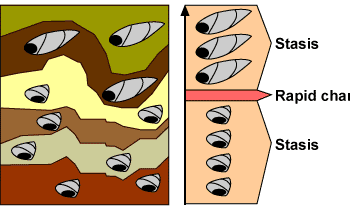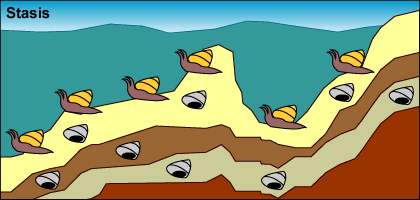Image Caption
Stasis: A population of mollusks is experiencing stasis, living, dying, and getting fossilized every few hundred thousand years. Little observable evolution seems to be occurring judging from these fossils.
Image use policy: For non-commercial, educational purposes, this image may be used with a Creative Commons CC BY-NC-SA 4.0 license. Please credit as follows: © University of California Museum of Paleontology, Understanding Evolution, www.understandingevolution.org
See where this image appears on the Understanding Evolution website »
This image is part of a series:
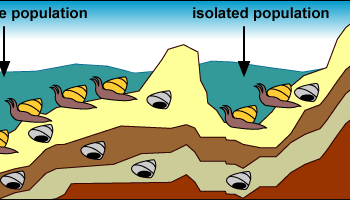
Punctuated equilibrium (2 of 8) Isolation
Isolation: A drop in sea level forms a lake and isolates a small number of mollusks from the rest of the population.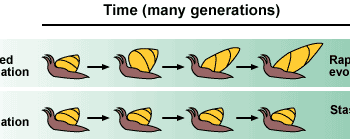
Punctuated equilibrium (3 of 8) Strong selection and rapid change
Strong selection and rapid change: The small, isolated population experiences strong selection and rapid change because of the novel environment and small population size: The environment in the newly formed…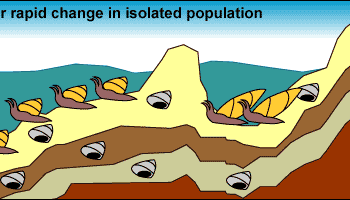
Punctuated equilibrium (4 of 8) No preservation
No preservation: No fossils representing transitional forms are preserved because of their relatively small population size, the rapid pace of change, and their isolated location.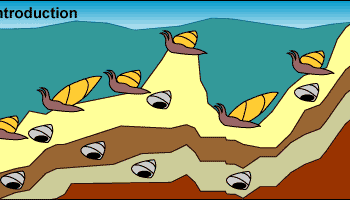
Punctuated equilibrium (5 of 8) Reintroduction
Reintroduction: Sea levels rise, reuniting the isolated mollusks with their sister lineage.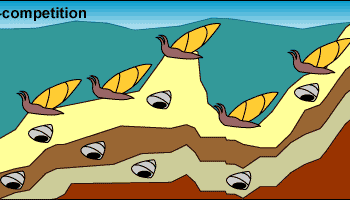
Punctuated equilibrium (6 of 8) Expansion and stasis
Expansion and stasis: The isolated population expands into its past range. Larger population size and a stable environment make evolutionary change less likely. The formerly isolated branch of the mollusk…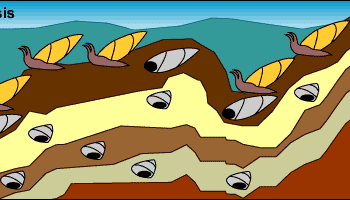
Punctuated equilibrium (7 of 8) Preservation
Preservation: Larger population size and a larger range move us back to step 1: stasis with occasional fossil preservation.